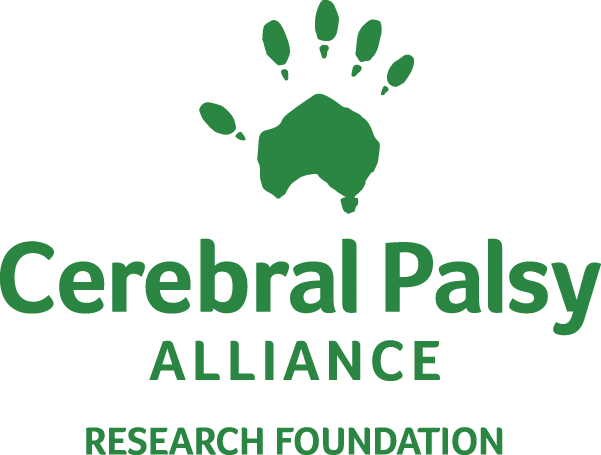
Science Spotlight: Cerebral Palsy and Genetics
Part Four: Understanding How Cerebral Palsy Changes the Brain Using Genetics
By Dr. Sara Lewis
Catch up on the first three parts of this blog series, which covered genetics concepts, methods for finding genetic causes for cerebral palsy (CP), and research findings on genetic contributions to CP.
Identifying genes can create new opportunities for understanding the changes to the brain that lead to CP. This is achieved through studies of the individual genes, as well as the entire group of genes.

Some of these genes have been studied in research models such as cell culture, yeast, flies, or mice to learn about the gene’s function. For instance, a zebrafish model of the NRCAM gene has changes in brain connectivity with decreased swimming movements. A fly model of the AGAP1 gene has reduced axon terminal size, which means there are reduced connections between motor neurons and muscles. AGAP1 is also important for moving proteins out of the endosomal compartment which serves a warehouse where proteins are sorted and transported where they are needed in the cell. Flies with variants in this gene have increased protein turnover, suggesting more proteins must be made if they are getting lost at the warehouse, which increases sensitivity to stress.
What can we learn about genes causing specific types of movement problems, such as spasticity or dystonia? Genes causing a similar condition with spasticity overlap with genes found in patients with spastic CP. Several of these genes are important for regulating the movement of organelle membranes and proteins, like the way AGAP1 acts a delivery driver to help get proteins where they are needed for crucial functions in different parts of the cell.
Genes causing dystonia and dystonic CP can be important for regulating dopamine, a chemical released in the brain that acts as the reward center and plays roles in motivation, mood, memory, and more. Patients with some forms of dystonia benefit from taking medication that increases dopamine, suggesting low dopamine or changes to sensing dopamine could be an important contributor to dystonia. Taken together, types of disordered movement patterns share both overlapping features and genetic pathways between CP and similar movement disorders.
Additionally, similarities in features between individuals with genetic variants and injuries can help researchers understand the changes in the brain caused by an injury. For instance, MRI findings from individuals with pathogenic variants in some genes include “hyper intense white matter,” which occurs after the death of cells that create myelin, also known as white matter. White matter insulates neurons, like the coating on an electrical wire, to ensure the signal is properly transmitted. Therefore, genetic variants could affect the development of these myelin-creating cells and can be used to understand the sequence of events following an injury, such as a stroke or loss of oxygen.
In summary, changes to connections in the brain can lead to CP and other disabilities of brain development. Future genetics and bioinformatics studies might be able to pinpoint specific brain regions or cell type involvement, and these insights could potentially help patients who would benefit most from deep brain stimulation.
About the Author: Dr. Sara Lewis is a Postdoctoral Research Associate at Phoenix Children’s Hospital working with Dr. Michael Kruer to identify genetic causes of cerebral palsy. She received her PhD in Neuroscience in 2015 with an emphasis in genetic neurodevelopmental disorders. Her work integrates human genetics with the fly model to study how genes leading to movement disorders changes in the brain. Her work also addresses the challenges implementing genetics findings in the clinical environment. Her research is funded by CPARF.
Articles cited:
Jin SC, Lewis SA, et al. Mutations disrupting neuritogenesis genes confer risk for cerebral palsy. Nat Genet. 2020 Oct;52(10):1046-1056. doi: 10.1038/s41588-020-0695-1. Epub 2020 Sep 28. Erratum in: Nat Genet. 2021 Mar;53(3):412. PMID: 32989326; PMCID: PMC9148538. https://www.nature.com/articles/s41588-020-0695-1
Lewis SA, Shetty S, Wilson BA, Huang AJ, Jin SC, Smithers-Sheedy H, Fahey MC, Kruer MC. Insights from Genetic Studies of Cerebral Palsy. Front Neurol. 2021 Jan 21;11:625428. doi: 10.3389/fneur.2020.625428. PMID: 33551980; PMCID: PMC7859255. https://www.ncbi.nlm.nih.gov/pmc/articles/PMC7859255/
Kurolap A, Kreuder F, Gonzaga-Jauregui C, Duvdevani MP, Harel T, Tammer L, Xin B, Bakhtiari S, Rice J, van Eyk CL, Gecz J, Mah JK, Atkinson D, Cope H, Sullivan JA, Douek AM, Colquhoun D, Henry J, Wlodkowic D, Parman Y, Candayan A, Kocasoy-Orhan E, Ilivitzki A, Soudry S, Leibu R, Glaser F, Sency V; Undiagnosed Diseases Network; Ast G, Shashi V, Fahey MC, Battaloglu E, Jordanova A, Meiner V, Innes AM, Wang H, Elpeleg O, Kruer MC, Kaslin J, Baris Feldman H. Bi-allelic variants in neuronal cell adhesion molecule cause a neurodevelopmental disorder characterized by developmental delay, hypotonia, neuropathy/spasticity. Am J Hum Genet. 2022 Mar 3;109(3):518-532. doi: 10.1016/j.ajhg.2022.01.004. Epub 2022 Feb 1. PMID: 35108495; PMCID: PMC8948158.
Wed 21 May 2025
Are you ready for STEPtember 2025? We’re officially in double digits — CPARF is celebrating 10 years of funding groundbreaking cerebral palsy research and driving innovation forward. And there’s no better way to mark this milestone than with our biggest, boldest STEPtember yet. Thanks to you, STEPtember has grown into a global movement that powers […]
Thu 15 May 2025
Celebrate Your Birthday with Purpose: Start a Fundraiser That Changes Lives Birthdays are for joy, reflection, and connection — and now, they can help fund groundbreaking research, fuel innovation in assistive technology, and create lasting change for people with cerebral palsy and other disabilities. Celebrate your special day by starting a customized birthday fundraiser to […]




